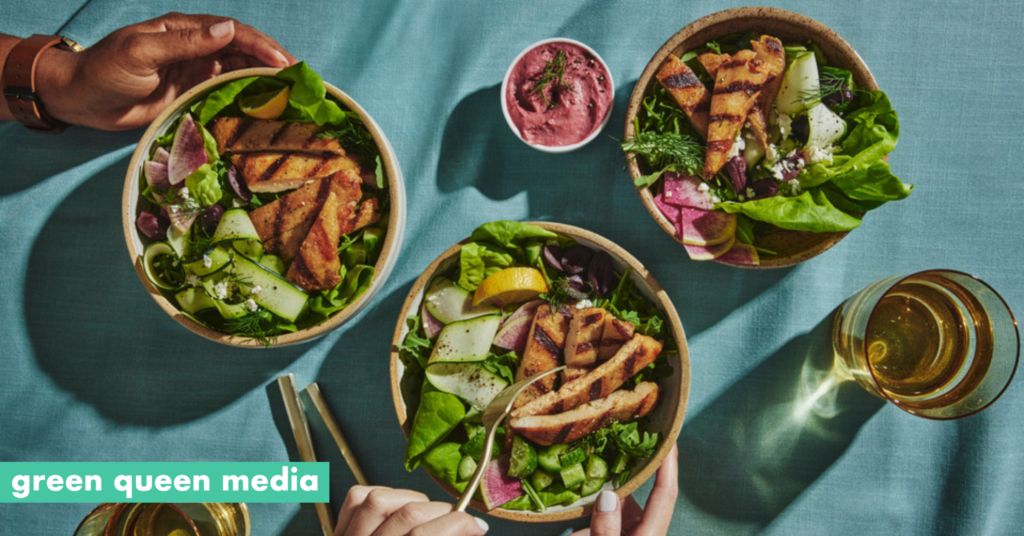Study: Lab-grown meat can cost as much as USDA organic chicken
4 Min. reading time
A groundbreaking study examines how continuous manufacturing can solve the scalability problems of raising chickens and bring prices down to $6 per pound.
If you talk to anyone in the cultured meat industry – be it a startup founder, an investor, or a think tank expert – most of them will probably tell you that scalability and cost are the two biggest bottlenecks to the industry’s progress.
Currently, there simply isn’t enough infrastructure to produce cultured meat in batches that drive costs to levels close to those of conventional meat. According to McKinsey, startups in this space would need over 17 times the fermentation capacity currently in place in the global pharmaceutical industry to meet the industry’s growth needs.
The consulting giant further states that it will take until at least 2030 for these proteins to reach price parity, even though the companies have cut their costs by 99% in less than a decade. One investor told Reuters that these products would need to reach manufacturing costs of $2.92 per pound to be price competitive with conventional meat.
A new study by Israeli company Believer Meats and the Hebrew University of Jerusalem (HUJI) now shows how cultured meat can be produced cost-effectively and describes it as a potential “breakthrough” for the industry.
The study, published in the journal Nature Food, uses a technology called tangential flow filtration (TFF) – an efficient method for separating and purifying biomolecules – for the continuous production of cultured meat. It has the potential to reduce the cost of producing cultured chicken to $6.20 per pound, which is the same as the retail price of conventional organic chicken.
By comparison, the only cultured meat currently available in supermarkets, Good Meat chicken, has a retail price of over $20 per pound—and cultured cells make up just three percent of the product.
Empirical study paves the way for accessible cultured meat


Believer Meats founder Yaakov Nahmias and researchers at HUJI were inspired by how Ford’s automated assembly line transformed the automobile industry in the early 20th century.
They used a new method of assembling bioreactors (made possible by the TFF technique) to achieve a biomass expansion of 130 billion cells per liter with a yield of 43% weight per volume. This process of culturing the chicken cells was carried out continuously for 20 days, resulting in daily harvests of the biomass.
The study also introduced an animal-free culture medium that costs only $0.63 per liter and enables long-term, high-density cultivation of chicken cells. Culture media accounts for the majority of the cost of cultured meat production and can cost hundreds of dollars.
Using these empirical data, the researchers conducted a techno-economic analysis of a hypothetical production plant with 50,000 litres capacity and arrived at the aforementioned price of $6.20 per pound for breeding chickens.
“Empirical data form the basis of any cost model for scaled cultured meat production, and this study is the first to provide real-world empirical evidence of key factors that affect production costs, such as media costs, metabolic efficiency and achievable yields in a scalable bioprocess design,” said Elliot Swartz, senior scientist for cultured meat at the Good Food Institute, an alternative protein think tank.
“Our results show that continuous manufacturing enables the production of cultured meat at a fraction of current costs, without resorting to genetic modification or mega-factories,” Nahmias said. “This technology brings us closer to making cultured meat a viable and sustainable alternative to traditional animal agriculture.”
Cost-cutting measures are a priority for producers of cultured meat


While the study authors acknowledged that several other factors would affect the final price of cultured meat, they added that their research underscores the potential of continuous manufacturing to reduce production costs and make these proteins more affordable for consumers.
The research has also presented solutions such as novel filter stack perfusion that can reduce factory costs, apart from the animal-free medium that can reduce raw material costs and continuous manufacturing that increases factory capacity. The analysis of the 50,000-liter plant showed a projected annual production of 2.14 million kilograms of cultured chicken meat at price parity with USDA organic chicken.
Many companies are trying to reduce the cost of growing media, including pet food makers Meatly and BioCraft Pet Nutrition. The former has developed a protein-free medium that brings the cost down to just 1 pound ($1.30), while the latter has developed a plant-based medium that could bring market prices down to $2 to $2.50 per pound.
“This important study provides numerous data points demonstrating the economic viability of cultured meat. The study confirms early theoretical calculations that serum-free media can be produced at a cost well below $1/L without sacrificing productivity, which is a key factor in the cost competitiveness of cultured meat.”
Israeli company Ever After Foods has also developed a bioreactor platform that offers its B2B customers a 90 percent price reduction for cultured meat. And researchers in Finland have proposed stem cell metabolism as a way to produce these proteins without expensive growth factors.
Believer Meats is currently building what it says is the world’s largest cultured meat production facility. The 18,500-square-meter facility in North Carolina could produce at least 10,000 tons of meat per year and is designed to help put this ongoing production research into practice on a large scale.



